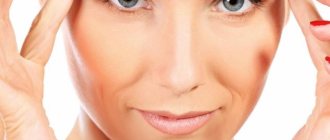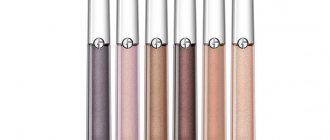What is aging
With age, fertility and immune system function decrease, and susceptibility to disease, on the contrary, increases. Cells and tissues work worse and worse, and organs cope with their functions no longer as efficiently.
The question of what exactly happens during aging is actually not so clear-cut. Scientists believe that over time, damaged cellular elements (DNA and mitochondria) accumulate in the body. This interferes with the normal functioning of cells, and they “age”.
When they are too damaged, they can self-destruct through apoptosis , a regulated process of cell death. Otherwise, our body can keep them in an “abnormal” state, which, among other things, leads to cancer.
Thirdly, exhausted, “senescent” cells stop reproducing and performing their normal functions. So they become an additional burden for neighboring cells due to the secretion of toxic substances that cause inflammation in the tissues.
The body tries to get rid of these non-functioning cells as quickly as possible thanks to the immune system. But, unfortunately, with age it also weakens.
This is the most general idea about the mechanisms of aging, with which most scientists today agree.
Get a manicure
Even if the face still looks young, rough hands always reveal the secret of age. Sloppy nails or hangnails look repulsive. Pay attention to your hands. Get a beautiful manicure and coat your nails with varnish. It lifts your spirits and instills self-confidence. To nourish and soften the skin of your hands, rub olive oil into them daily.
- 14 home remedies to get rid of warts
- For which relatives is an additional pension payment due?
- Highlighter for face
What happens in the body during aging
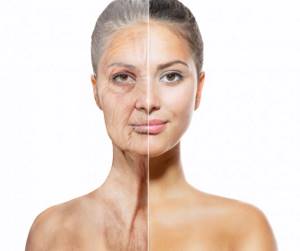
The consequences of aging are reflected in our appearance, but this is only a consequence of serious internal changes that occur with age. How quickly they appear depends largely on a person’s genetics and lifestyle.
So, let’s highlight the main external signs of aging:
- “Shortening” and curvature of the silhouette. The intervertebral discs become dehydrated and thinner - we become shorter. In some cases, joints may become deformed due to wear and tear of the cartilage. The silhouette takes on a curved, so-called “ski” pose - the shoulders are directed forward, the back and knees are slightly bent. For comparison, the figure of young people is distinguished by a straight back and an open chest.
- Reduction in muscle volume. With age, muscle mass decreases (sarcopenia) - it is gradually replaced by fat. Large muscles (buttocks, hips, shoulders) are especially affected. Together with them, a person loses strength and endurance.
- Deterioration of skin quality. After 40 years, the production of collagen and elastin sharply slows down, as a result, the skin becomes more flabby. So, after 25 years, collagen production decreases by 1% per year. Thus, at 50 years old there is half as much of it in our body as at 20 years old. In addition, so-called “senile” pigmentation appears - brown spots. Sebum production also decreases and the skin becomes drier.
- Changes in hair color and structure. They become drier and more porous. In addition, graying progresses due to the fact that the pigments that produce color (melanocytes) no longer work properly.
- Changes in facial features. Firstly, it loses its volume, and the tissue begins to “sag” (ptosis). Secondly, existing wrinkles deepen and new ones form. Thirdly, the lips become thinner, and the nose, on the contrary, becomes thicker and longer. In addition, teeth wear out and the dental mass loses its volume. As a result, the smile “sinks” downward, exposing more of the lower teeth.
How does the body age from the inside?

The main internal age-related changes look like this:
- Decalcification of bones. If there is no physical activity, bone tissue loses calcium even more rapidly.
- Increase in fibrous and adipose tissue. They do not serve any useful function, gradually replacing supporting tissues.
- Increased stiffness of connective tissues. This happens simultaneously at the level of integument and organs. Tissues become dehydrated and lose flexibility.
- Decreased breathing volume. The reason is that the pulmonary alveoli lose their elasticity and permeability.
- Decreased flexibility of blood vessels. Plaques gradually form in them, clogging the internal passages. Blood microcirculation slows down in the capillaries. At the same time, the heart also loses flexibility and strength.
- Violation of the secretory function of the stomach. In this regard, the amount of bile, gastric juice and pancreatic juice changes. As a result, intestinal transit slows, leading to constipation.
- Decreased glucose tolerance. This leads to diabetes and excess weight problems.
- Decreased hormone production. In particular, melatonin, growth hormone and DHEA, which is responsible for maintaining sexual function.
- Slowing down the filtration and renal elimination of water-soluble toxic substances. They are getting worse and worse.
- Deterioration of the immune system. She begins to resist germs and infections weaker. This is due in part to hormonal imbalances, as well as factors such as oxidative stress and glycation . White blood cells become less effective and the body produces fewer antibodies to protect itself. In addition, the risk of developing antibodies against one’s own tissues increases, hence various autoimmune diseases.
- Decreased neurological functions. As we age, the brain loses 5-10% of its weight and the number of neurons decreases. Due to the oxidation of brain lipids, the speed of transmission of nerve impulses decreases. The concentration and production of neurotransmitters (dopamine, serotonin, norepinephrine, etc.) is reduced. With age, hearing, vision, taste, smell and touch deteriorate. Mental abilities can be more or less developed, depending on how they are used. But depression is becoming more common.
Factors influencing human aging
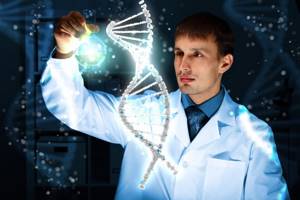
It has been scientifically proven that old age is a disease that can and should be treated. The fact is that if you neutralize the impact of aging factors, you can significantly extend a person’s life, and most importantly, improve its quality, improving health.
So why do we age?
- Oxidative stress. Just like a piece of metal that rusts over time, our fabrics oxidize. This is the result of normal internal processes of energy “burning” and metabolic reactions, which result in the formation of free radicals. Oxidation or oxidative stress is inextricably linked with the occurrence of age-related diseases.
- Reduced protein quality. As we age, our cells can produce irregularly shaped proteins that quickly become dysfunctional. Moreover, proteins are the elements that structure the entire body and our DNA. They form enzymes and hormones. As the body ages, the process of glycation of proteins comes to the fore - when they combine with glucose molecules. As a result, body tissues lose elasticity and become rigid, and intercellular metabolism and cell nutrition slow down.
- Telomere shortening. Telomeres are a kind of protective cap on the ends of chromosomes. During cell division, that is, with age, their size decreases. Telomere length is, rather, not a factor of aging, but its marker. Their significant shortening is associated not only with age, but also with poor immune defense, degenerative diseases and constant stress.
- Deterioration of mitochondrial function. Mitochondria are organs in our cells that play an important role in producing energy for their functioning. These peculiar “cauldrons” constantly burn nutrients and oxygen. As a result of this “burning”, a large number of free radicals are generated. And their excess can damage mitochondria, cell DNA, its membrane and other elements. If mitochondria continue to deteriorate as a result of extensive oxidation, the cell will be forced to self-destruct through apoptosis. Or it will turn into an aging cell - these are the ones that disrupt the normal functioning of tissues.
- Errors in cell and DNA replication. Our DNA is also damaged daily by environmental factors. Every day, between 1,000 and 1,000,000 injuries occur per cell. Many genes that influence human lifespan are involved in DNA repair. Our cells already have an “error correction system” built into them. However, if too much of them accumulates, it eventually leads to cell dysfunction, degeneration and death.
- Methylation disorder. This is an essential biochemical process that is of great importance for DNA synthesis, turning on and off “bad” genes in the cell, detoxification and metabolism. Whether methylation is balanced determines whether hereditary diseases will “turn on” at a certain point or will not bother a person for the rest of his life. With the help of methylation, the body gets rid of toxic heavy metals (mercury, lead, arsenic). If it is disrupted, these toxic elements continue to accumulate, disrupting many body functions. Scientists believe that decreased methylation correlates with aging and many degenerative diseases.
- Stem cell depletion. Their uniqueness lies in their ability to divide, giving rise to new cells specific to a particular organ. Stem cells are present in the tissues of our body in small quantities. And with age, their number decreases. Hence the slowdown in cell renewal and less efficient functioning of organs.
- Accumulation of toxins. Even if we do not take into account toxic substances that enter the body from the outside, metabolic residues accumulate in our cells, which interfere with their normal functioning. We are talking, in particular, about lipofuscin - this is a protein breakdown product. Cells cannot digest it completely and for a long time it cannot be “neutralized.” Intracellular lipofuscin deposition increases with age in many tissues. It is involved in the formation of dark spots on aging skin and can cause heart and brain diseases. Thus, lipofuscin is found in large quantities in brain cells in Alzheimer's disease. This toxic protein accumulates in the intercellular space, slowing down nutrient absorption and detoxification processes.
Causes of premature aging
There are actually many such reasons. Let's highlight the main ones.
- Associated with oxidative stress. It is a serious cause of aging, as well as acute and chronic diseases. Therefore it is important to consider factors that increase the production of free radicals:
- tobacco and alcohol use;
exposure to toxic substances and drugs;
- stress;
- sleep deficiency;
- intense solar radiation;
- electromagnetic radiation;
- inflammatory and infectious diseases,
- physical and mental fatigue.
- Associated with chronic inflammation. Inflammation is a normal protective reaction of our body. For example, it begins when a foreign element (bacteria, viruses) enters our tissues or when recovery from injury is required. Inflammatory syndrome is characterized by increased blood flow, redness, heat, swelling and often pain. Inflammation is necessary, but it must be short-term. Chronic inflammation gradually undermines our immune, antioxidant and energy systems, accelerating aging.
In particular, oxidation chain reactions alter the famous “unsaturated fatty acids,” components of the protective membranes of our cells, which as a result lose their permeability and flexibility. Oxidation can attack component proteins within cells, down to the nucleus, and affect DNA. The cell may then become abnormal, prematurely aged, malignant, or die.
Causes of chronic inflammation:
- foci of chronic infection (dental, gynecological, ear, etc.);
- intestinal inflammation, often associated with increased intestinal permeability and contributing to intolerance to certain foods;
- constant influx of toxins due to poor lifestyle or environment;
- consumption of foods with a high glycemic index (sugars and “fast” carbohydrates);
- excess saturated and especially trans fats , as well as too much omega-6 against the background of omega-3 deficiency;
- too high in calories;
- obesity;
- stress and insomnia;
- decrease in estrogen and testosterone, which are involved in the body’s immune reactions;
- constant presence of allergens in the environment;
- excess iron in the blood.
IMPORTANT TO KNOW: Chronic inflammation contributes to the shortening of telomeres that protect our DNA, as well as the degeneration of cells and tissues (joints, tendons, muscles, vessel walls, pancreas). Over time, this leads to a decrease in the body's defenses and sets the stage for cardiovascular diseases, arthritis, asthma, Alzheimer's disease, irritable bowel syndrome, cancer and autoimmune diseases.
Eat anti-aging foods

- Fish . Fatty varieties (trout, mackerel, sardine, salmon) contain omega-3 fatty acids, which protect skin cells from aging and improve brain function.
- Broccoli, cauliflower, spinach, beans . They prevent the formation of advanced glycation end products - substances that cause premature appearance of wrinkles.
- Oatmeal . Quickly fills you up and gives you energy for the whole day.
- Nuts . Contains vitamin E, which promotes rejuvenation.
- The government will pay 60% of the costs when converting a car from gasoline to gas
- How to restore lungs after coronavirus infection
- Affordable Blood Pressure Relief Product
Diagnosis and prevention of aging
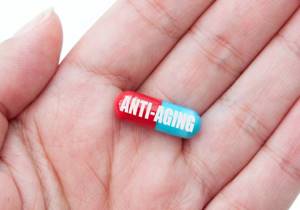
Is your health appropriate for your age and how can you prevent serious diseases and alleviate existing ones? Anti-aging medicine answers these questions. So, for example, an anti-age doctor may prescribe a blood test for homocysteine to find out if the patient’s methylation is okay .
And the biological markers of chronic inflammation look like this:
- C-reactive protein;
- fibrinogen;
- ESR;
- ferritin and transferrin (iron level indicators);
- prealbumin.
These are all blood tests that can be taken in almost any laboratory.
Another indicator of the intensity of the aging process is glycation. To determine if everything is okay, the doctor may order the following tests:
- glycated hemoglobin;
- HOMA index.
However, specific studies to diagnose age-related changes can only be prescribed by an anti-aging medicine doctor. Moreover, the approach to each patient is personalized.
Brief conclusions
- Age is a disease that needs to be treated.
- Aging is the result of a breakdown in the most important biochemical processes and cellular errors.
- By regulating these processes in time, it is possible to prevent so-called “age-related” diseases.
- There are a number of tests that show how rapidly a particular patient’s body is aging.
- Following simple rules and turning to anti-aging medicine doctors can prolong youth.
“For successful longevity and slowing down aging, it is necessary to increase health capital - this is its safety margin. That is, this is when age increases, and you do not deplete your health resources. This is the fundamental goal of anti-aging medicine. When we increase these resources, many diseases automatically reverse or are cured - they simply disappear, or go into a very long remission and do not appear for decades. This allows people to live long, with dignity, successfully, without illnesses and problems. And just regularly check your health to understand that everything is under control. And if something is depleted, it needs to be adjusted. A patient who has already reached the level of full regulation of his body can undergo such checkups once a year or less.” .
Dorina Donich
Doctor of Medical Sciences, obstetrician-gynecologist, doctor of bioregenerative and anti-aging medicine.
Physical activity
Many believed in the rejuvenating power of sport for good reason: research by American scientists proves that constant training helps to resist premature aging of the skin. Frenchwoman Joëlle Ciocco, a beauty guru whose massage techniques have an amazing rejuvenating effect, also agrees with them. She is also convinced that playing sports helps the skin remove toxins from sweat and breathe better.
Even if the first wrinkles on the body have made themselves felt, regular exercise will help smooth them out and make the skin denser and smoother. Cycling or jogging twice a week - and within a month the stratum corneum of the skin of the body will become thinner and more elastic, and the dermis, on the contrary, will become denser.


